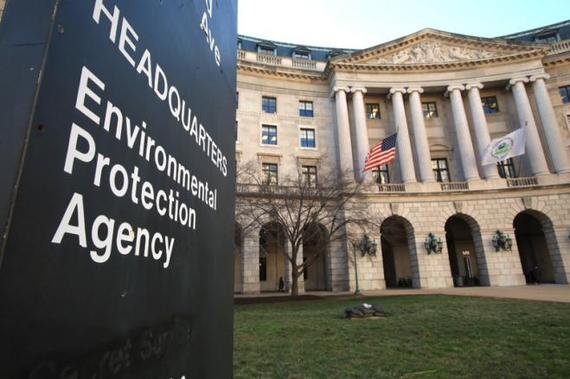
The Environmental Protection Agency (EPA) is moving to withdraw its interim regulatory decision on paraquat, announcing that it needs more time to examine the potential health effects of the weed killing chemical that has been widely used in agriculture for decades, but also linked for years to the incurable brain ailment known as Parkinson’s disease.
The EPA had promised to issue a report by Friday, January 17 updating its position on paraquat after a petition filed by the Michael J. Fox Foundation for Parkinson’s Research and several other health advocacy organizations challenged the EPA’s 2021 interim registration review decision in which the agency concluded that there was “insufficient” evidence linking paraquat exposure to Parkinson’s.
That interim EPA decision did call for certain mitigation measures to reduce risks the agency said it found necessary to protect human health and the environment, and labels on paraquat products were amended in 2022 to reflect those measures. But critics have pressed the EPA to go further and ban the pesticide entirely.
The petition, filed in the 9th US Circuit Court of Appeals, challenged not only the agency’s position on Parkinson’s risk, but also the EPA’s analysis of respiratory and dermal exposures, exposure risks from paraquat drift, and how to balance paraquat’s risks and benefits.
As part of the process of reexamining its interim decision, the agency said a year ago that it would spend 2024 analyzing new information about paraquat health effects and considering public comments about the issue. The agency said last year it would issue a final document and potential next steps for paraquat use by the mid-January 2025 date.
Instead, on Friday, the EPA said it is delaying any action. The agency issued a statement saying it had “determined that additional data are necessary to resolve the uncertainty” surrounding certain paraquat risks. The agency cited the “potential for paraquat to volatize,” and said it would be trying to determine potential “inhalation risks to bystanders from the volatilization of paraquat.” Such data “could change the underlying human health risk assessment,” and the regulatory decision based on that assessment, the EPA said.
And on Friday, the EPA asked the 9th Circuit to allow it to withdraw its interim decision on paraquat while it further investigates the concerns surrounding the chemical.
“EPA intends to withdraw the Interim Decision and will promptly do so once the Court rules on this motion,” the agency states in its court filing. If the court agrees, the case brought by the health advocacy groups will become moot, the EPA argues in the filing.
The EPA asked the court to allow the agency until March 3 to file a reply in support of its motion to remand.
In its announcement of the delay, the EPA cited a recent preliminary conclusion by California state regulators that paraquat does not cause Parkinson’s and said “EPA scientists have not yet had sufficient time to review that report.”
Critics of the chemical have been pressuring the EPA to ban paraquat for years, but the drumbeat has grown louder in recent months.
In October, more than 50 US lawmakers sent letters to the EPA calling for a ban, arguing that paraquat is a “highly toxic pesticide whose continued use cannot be justified given its harms to farmworkers and rural communities.” The lawmakers cited scientific links between paraquat use and development of Parkinson’s and other “life threatening diseases” as well as “grave impacts on the environment”. The lawmakers note that approximately 70 countries have banned paraquat.
Paraquat was introduced in the 1960s by a predecessor to the giant global agrochemical company Syngenta, which is now a Chinese-owned entity. The herbicides has become one of the most widely used weedkilling chemicals in the world, used by farmers to control weeds before planting their crops and to dry out crops for harvest. In the United States, the chemical is used in orchards, wheat fields, pastures where livestock graze, cotton fields and elsewhere.
Internal Syngenta documents revealed by The New Lede show the company was aware many years ago of scientific evidence that paraquat could impact the brain in ways that cause Parkinson’s, and that it secretly sought to influence scientific research to counter the evidence of harm. Syngenta was allegedly aided in suppressing the risks of paraquat by a “reputation management” firm called v-Fluence, The New Lede reported in September. Internal documents also show that the company withheld damaging internal research from the EPA and worked to try to discredit a prominent scientist whose work connected paraquat to Parkinson’s.
Thousands of US paraquat users who suffer from Parkinson’s are currently suing Syngenta, alleging the company should have warned them of the risk of developing the incurable brain disease, but instead worked to hide the evidence of risk.
A class action lawsuit brought on behalf of Parkinson’s sufferers in Canada makes similar claims.
Syngenta has settled some claims that were set for trial and has successfully delayed other trials in multiple jurisdictions around the US.
Get the source article here


